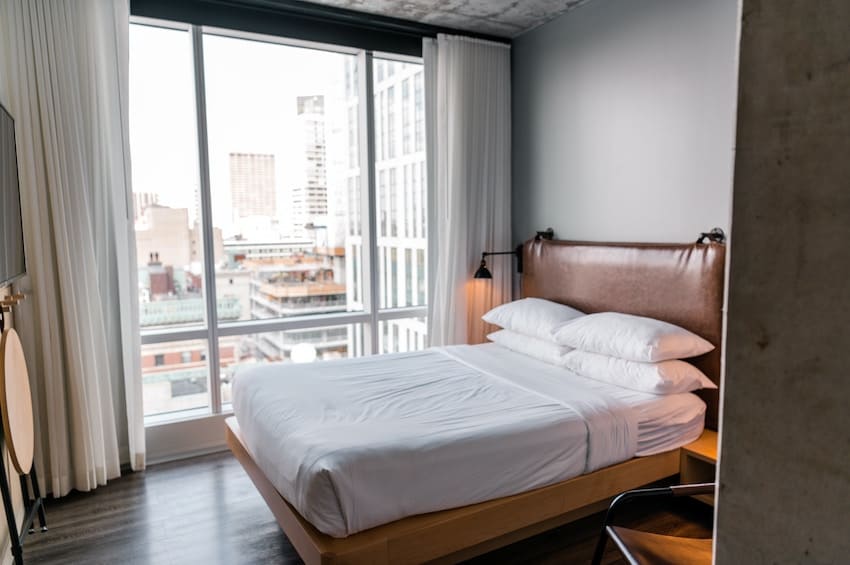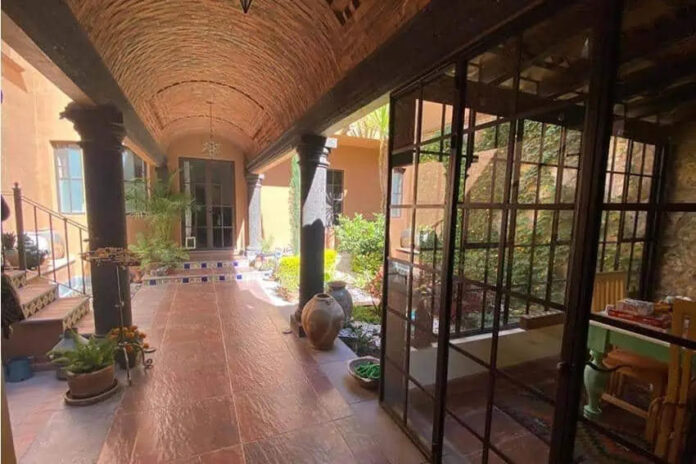Do people feel comfortable in your home? Do you like to host out-of-town visitors? Enjoy staying overnight in your friends’ homes?
Long before I knew about home exchanges, I used to like staying in a friend’s home, with or without them. When I was with them, they were good company; alone, I felt a sneaky kind of freedom, as if I had been given permission to be an intruder.

If you like hosting friends, you may be a candidate for home exchanges. My husband Barry and I joined homeexchange.com about 15 years ago and have since enjoyed house swaps in the Czech Republic, France, Ireland, Germany, Colombia and Ecuador, as well as in San Francisco, Portland, New Orleans and Breckenridge, Colorado.
We would have exchanged homes in Mexico too, but so far, most people we’ve approached want to swap for only two or three days, and we prefer a week or more.
Home exchanges are only one way to stay for free when you’re traveling; another popular option is housesitting, and in this article, I’ll discuss both.
Home exchanges
For about US $230 a year — the average membership fee for most home exchange organizations — you can take advantage of three types of swaps: simultaneous, nonsimultaneous and point exchanges. The point system means you can accumulate points to use for a future home exchange.
Home exchanges require preparation. You need to decide how to handle such issues as:

Guest information: We have a detailed guestbook providing information about Wi-Fi, contact and emergency numbers, utilities, how to use our solar-heated shower, garbage, neighbors, the cleaning schedule and nearby food stores, restaurants and transportation.
Home maintenance: Who will make sure the house is ready for guests? Our Mexican cleaner puts out fresh towels and leaves a welcoming bottle of wine on the kitchen table.
Use of amenities: Will you allow guests to use your car, bicycles etc.?
Private storage area: If you have personal belongings, valuables or foodstuffs in the house, you’ll need to put them away in a secure storage area. We feel annoyed when we stay in homes where the owners leave us no space to put our stuff.
We’ve found being proactive pays off. For example, since Barry’s British family has a reunion in England every two years, we reach out to home exchangers somewhere relatively close to enjoy a mini-vacation in a new area.
We love the personal connection woven into many home exchanges. In Brittany, for example, we had gotten off the train from Paris and were on our bikes when it started to rain. Our hosts drove 30 miles and picked us up! Meanwhile, in Prague, we enjoyed not only the couple whose home we rented but also their neighbors. A year later, the neighbors visited us in Guanajuato.

Be sure to carefully vet not just the home but the neighborhood where you exchange before committing. We were excited when a couple from Colombia invited us to stay at their home in Medellín. We knew they lived in the suburbs but didn’t realize how gated, bland and empty their neighborhood was. The only upside was that we’d hire an Uber driver daily, and our rides became a highlight of the day. The drivers were eager to share their stories and tell us how much had improved since Medellín’s infamous drug cartel era.
Housesitting
Everyone we know in Mexico who housesits does so through the home and petsitting organizations House Sit Mexico or Trusted Housesitters. With these platforms, just as with home exchanges, you pay an annual fee: US $79 for House Sit Mexico and starting at $129 for Trusted Housesitters.
One Guanajuato couple we know has housesat so many times in Pátzcuaro, Michoacán, that they have become friends with several owners and now housesit informally, rather than pay a membership fee. They also housesit regularly in San Miguel de Allende and Vancouver, British Columbia, where they lived before moving to Mexico. Another woman we know — currently housesitting in Costa Rica — lives in Tepotzlán, Morelos, and usually stays at homes in different parts of Mexico.
Everyone agrees it’s important to ask the owners a lot of questions before making the decision to housesit. Find out how much time is required to take care of any animals the house may have, so you know how much freedom you’ll have to come and go during the day. If you don’t want to drive the owners’ car, ask if the neighborhood is walkable and near public transportation, or be willing to take taxis.
It’s crucial to ask about the weather. “Our hardest housesit was at a home on the Nayarit coast in June,” says Rachel, a Canadian. “The home was near the jungle with no air conditioning. Lots of mosquitoes, and the humidity was grueling! It was a long three weeks!”
Rachel also points out that housesitting as a couple is easier because if there’s a problem, one can get help while the other stays with the animals.
So take your pick. Whether you choose home exchange, housesitting or both, each is not only a bargain, but you get to know a new area and will probably make new friends along the way.
Louisa Rogers and her husband Barry Evans divide their lives between Guanajuato and Eureka, on California’s North Coast. Louisa writes articles and essays about expat life, Mexico, travel, physical and psychological health, retirement and spirituality. Her recent articles are available on her website, authory.com/LouisaRogers
